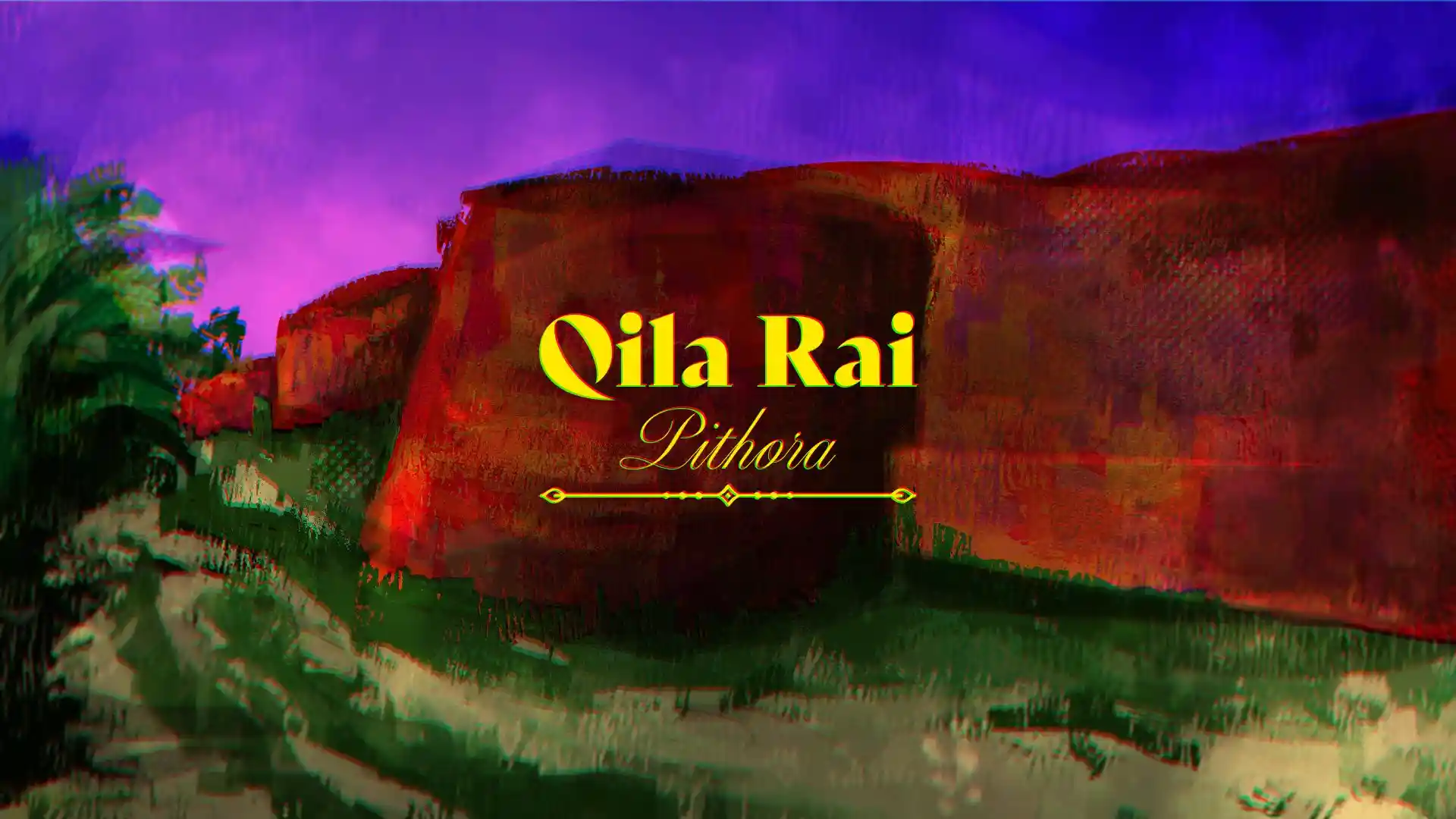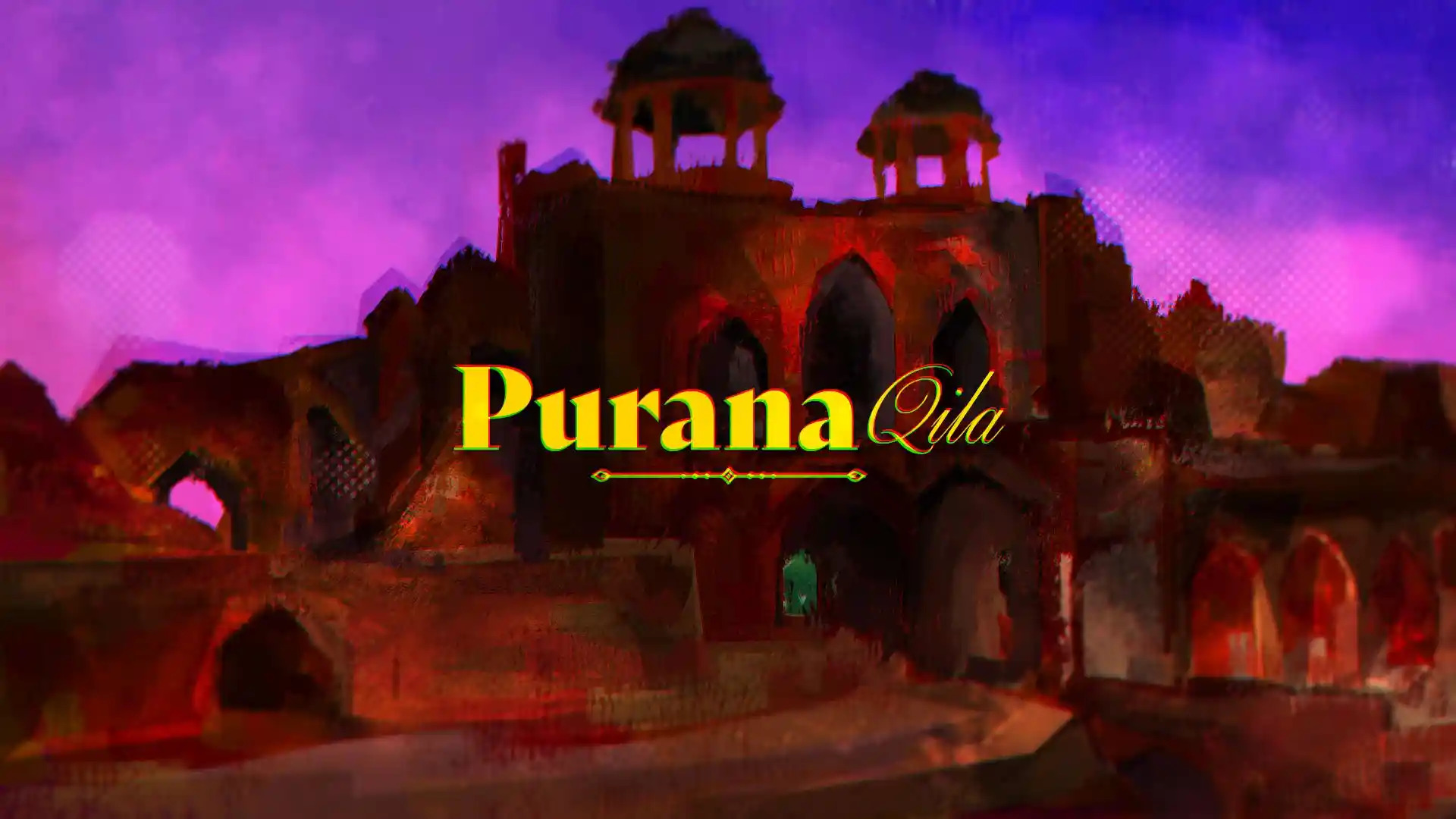DELHI The City That Would Not Die: Lalkot and Qila Rai Pithora
The story of Delhi, the capital of India, is not just the story of one city, but of at least eight (recorded and recognised) capital cities that shifted locations through the ages, finally settling down at the current location as the ninth capital of India. It has been the site of a succession of seats of empires, whose remains can still be seen in the current city of Delhi.

Qila Rai Pithora illustrated
The story of Delhi, the capital of India, is not just the story of one city, but of at least
eight (recorded and recognised) capital cities that shifted locations through the ages,
finally settling down at the current location as the ninth capital of India. It has been the
site of a succession of seats of empires, whose remains can still be seen in the current
city of Delhi.
Let us start from the very beginning, even before history was recorded. Those times are
known as prehistoric times.
In the forested area where Surajkund and Anangpur dam are located, ancient Stone Age
relics, tools like cleavers and scrapers, were found in more than forty sites, which are
mostly on Tughlaqabad-Surajkund road. It was inferred from these findings that pre-
historic man lived in the southern hilly area of Delhi and Haryana.
Once man gave up his nomadic-hunter life, he began to settle down in groups or
families, leading to the formation of societies and civilizations.
According to the Hindu scriptures, the earliest human civilization in Delhi region lived
at Indraprastha, the capital of the Pandavas. This period is called the Vedic period, when
state-level societies existed. The Kuru kingdom of the Pandavas was the first such
organized society.
Interestingly, until the beginning of the present century, a village known as Indarpat lay
within the precincts of Purana Qila in Delhi. The villagers called the old fort as pandavon
ka qila, which indicates that Indarpat is a distorted version of Indraprastha. Ultimately,
the archaeologists were able to locate a small mound in the old fort, under which lay the
ruins of the ancient city of Indraprastha. Painted grey ware, which has been
authentically linked with that era, was found along with a few other objects, like incense
burners and figurines.
After the era of Indraprastha, the story of Delhi seems to have been lost in the vast
space of time. Though there is evidence about the antiquity of the city linking it to the
times of Indus valley civilization, but not as a capital that it was during Vedic times and
subsequently in the medieval times.
The village Anangpur, located near Faridabad in Haryana, was the earliest known
settlement of the Tomar dynasty in the medieval times. In fact, Anangpur was the
capital of the first Tomar king Anangpal I, who declared himself as an independent ruler
and established his dynasty in the Delhi region in 8th century. From Anangpur, he
expanded his kingdom further and is believed to have built numerous palaces and
temples during his reign, the ruins of which can be seen even today. The Anangpur dam
near Anangpur village was an engineering marvel of that time and still exists.
In 10th century, Surajpal Tomar, a sun-worshipper, built Sun temple and a reservoir
(kund) called Surajkund (the sun’s lake). It is a popular picnic spot now and holds an
annual crafts fair, showcasing the varied crafts of India. One can see the richly carved
doors, pillars and ramparts in Surajkund even today.
By the 11th century, the last Tomar king, Anangpal II built a fortress called Lalkot, a short
distance away from Anangpur, and shifted his capital there. It is believed that the
Tomars were descendants of the Pandavas and Anangpal Tomar played an important
role in reviving Indraprastha’s lost glory to a great extent. A temple of Yoga Maya, built
in the time of the Pandavas, still exists in the precincts of Lalkot, as does an academy of
the same era called Prachin Shakti Gyan Pith, teaching insight into cosmic energy.
Lalkot is officially considered as the first city of Delhi. It includes the Qutub Minar
complex, and the remains of the fort wall are spread across south Delhi, Saket, Mehrauli,
Sanjay Van, Kishangarh and Vasant Kunj areas of Delhi.
Tomar Rajputs reigned for a long time, but were eventually overthrown by Chauhan
Rajputs. One of their kings, Prithvi Raj Chauhan built a grand fort, three times bigger
than Lalkot, on a nearby hill. It was called Qila Rai Pithora, and it surrounded Lalkot
from three sides. The area included, apart from Qutub Minar and Mehrauli, the current
IIT Delhi campus as well as the NCERT campus. A large inn called Lado Sarai was also
within the ramparts of Qila Rai Pithora; its vast lands are currently being used as a golf
course, called the Lado Sarai golf course.
Lalkot and Qila Rai Pithora which formed the complex of the first city of Delhi had 276
Hindu and Jain temples. Several hundreds of carved pillars of these temples survived for
a long time and were reused by the subsequent rulers. The wall of Qila Rai Pithora runs
from Fateh Burj in the north to Dam Dama in the south-west of the modern day Delhi,
going up to the south of the hill where Azim Khan’s tomb is situated, and from there,
through the ridge, up to Metcalf house.
This is a very brief account of the first city of Delhi… there is so much more that you can
discover walking through the above-mentioned areas leisurely.

Purana Qila
You can check out the books written by Sunita Pant Bansal here.


